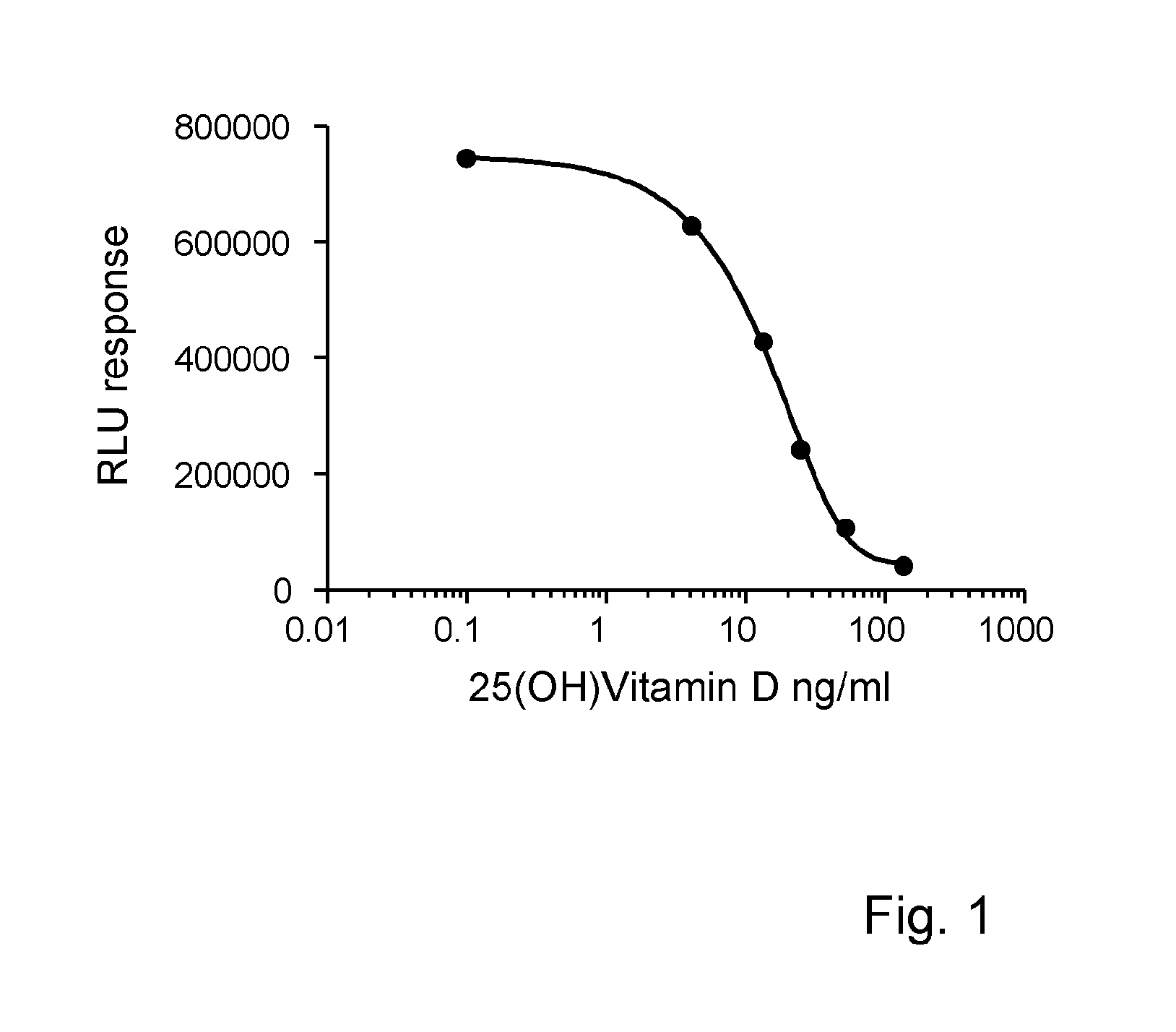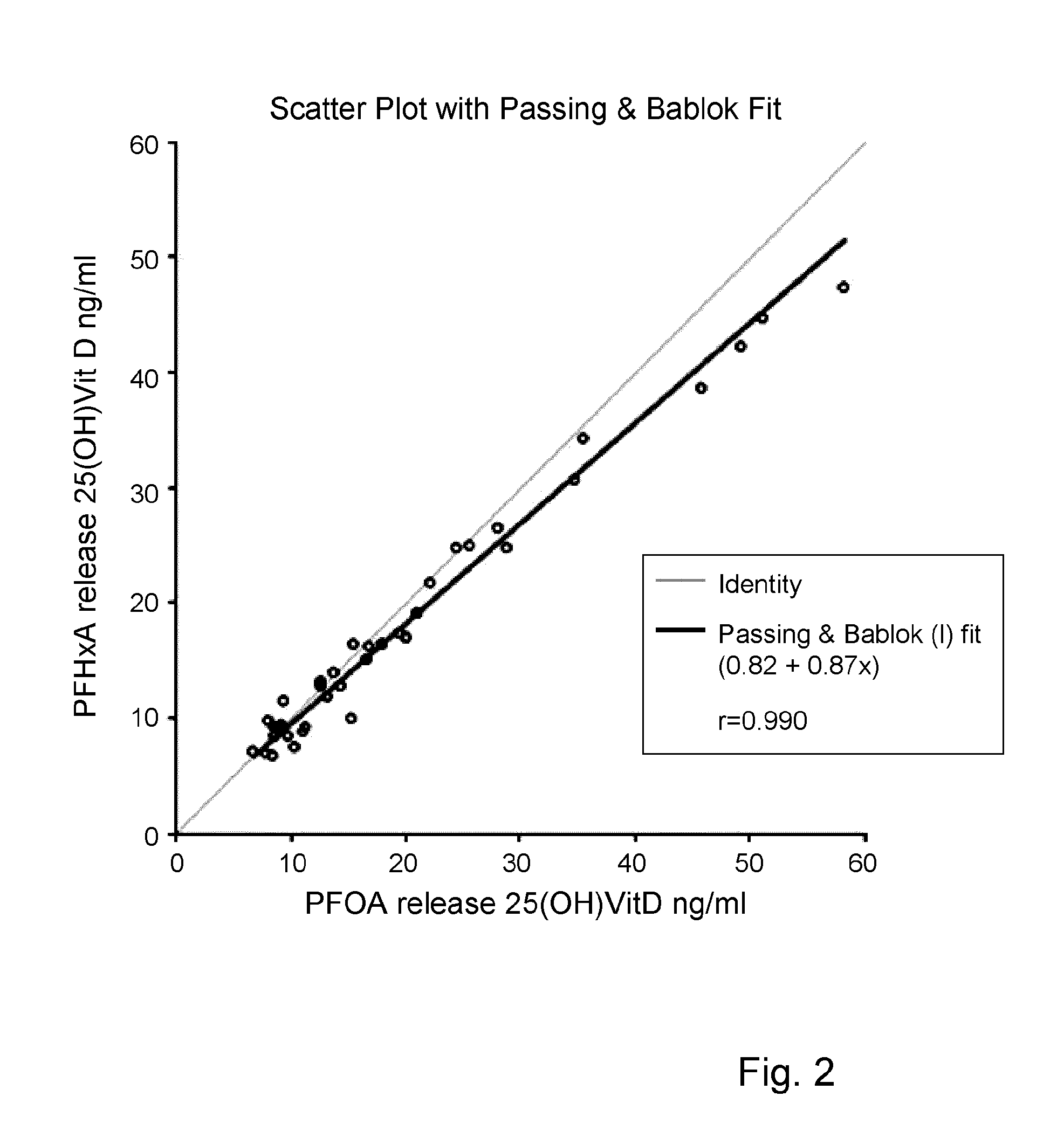Release reagent for vitamin d
a technology of vitamin d and reagents, applied in the field of immunoassay methods, can solve problems such as osteomalacia, bone softening diseases, rickets in children,
- Summary
- Abstract
- Description
- Claims
- Application Information
AI Technical Summary
Benefits of technology
Problems solved by technology
Method used
Image
Examples
example
[0044]Measurement of Vitamin D
[0045]The assay was performed using an automated platform. To 15 μl of sample 255 μl of sample diluent / assay buffer was added. An aliquot of 100 μl of the diluted sample was transferred to a second incubation well. A volume of 50 μl of magnetic particles coated with monoclonal antibody was added to the diluted sample and incubated for 45 minutes at 37° C. Subsequently 50 μl of a solution biotinylated Vitamin D was added and incubated for 7 minutes at 37° C. Then 50 μl of a solution streptaviclin-Acriclinium ester was added and again incubated for 7 minutes at 37° C. After magnetic separation of bound and free biotinylated Vitamin D, the bound acriclinium ester was quantified.
[0046]Materials
[0047]Paramagnetic particles Magnetic particles (Invitrogen, M280 tosyl-activated, 2.8 μm) were coated with a polyclonal antibody against Mouse IgG (5 μg / mg of magnetic particles). The particles were coated on a roller at a concentration of 0.5 mg / ml in 0.01M PBS, 0.1...
PUM
| Property | Measurement | Unit |
|---|---|---|
| concentration | aaaaa | aaaaa |
| incubation time | aaaaa | aaaaa |
| incubation time | aaaaa | aaaaa |
Abstract
Description
Claims
Application Information
 Login to View More
Login to View More - R&D
- Intellectual Property
- Life Sciences
- Materials
- Tech Scout
- Unparalleled Data Quality
- Higher Quality Content
- 60% Fewer Hallucinations
Browse by: Latest US Patents, China's latest patents, Technical Efficacy Thesaurus, Application Domain, Technology Topic, Popular Technical Reports.
© 2025 PatSnap. All rights reserved.Legal|Privacy policy|Modern Slavery Act Transparency Statement|Sitemap|About US| Contact US: help@patsnap.com


